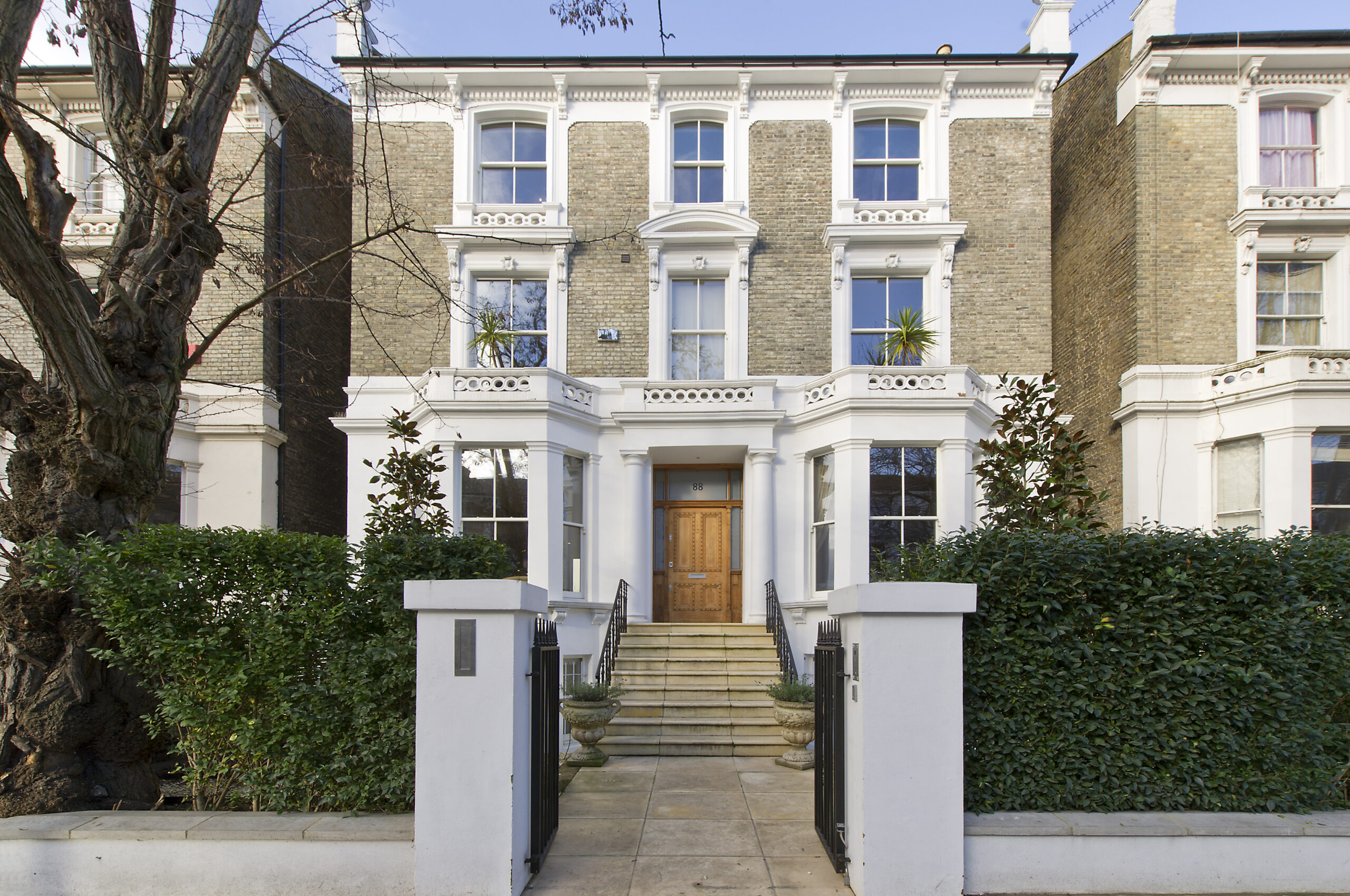
The St. Quintin Estate, North Kensington.

Early Beginnings
In the early 1800s, North Kensington was occupied by two farms: Portobello farm and Notting Barns. Notting Barns, the largest of these two farms originally comprised of 225 acres with a farm house located at the junction of the now St Quintin Avenue and Chesterton road.
The house and the land were eventually passed from Thomas Darby of Sunbury to the St Quintin family who owned extensive estates and properties across the country. It was not until the mid 1800s when North Kensington witnessed substantial growth which allowed more residential building to commence. Leading the efforts was Colonel St Quintin who lived in Yorkshire. He subsequently appointed English architect Henry Currey to supervise the development of St Quintin’s Estate. Currey, known for his ‘pavilion style’ began to lay out his plans for long, straight, parallel streets leading westward from Ladbroke Grove.
Cambridge Gardens, Oxford Gardens and Bassett road were the first streets to be designed and 60-68 Cambridge Gardens the first to be built. These prime streets featured four storey terraced houses with centrally placed doorways flanked by columns and bay windows. Situated on tree-lined streets, the harmonious terraces boast ornate cornice lines, period detailing and decorative brickwork.
There are two dominant brick types used throughout the Oxford Gardens Conservation Area; London stock brick, a soft handmade brick made from yellow local clay was used predominantly for the back portion of buildings and a more expensive white brick was used for the houses façades for a bolder, more distinguished appearance. Coupled with the ornate gables, cornice lines, stucco frontages and bay windows as seen on Bassett road; the Oxford Gardens Conservation Area continues to be an especially desirable patch of West London.
In just twenty years, over 200 houses were built proving that demand in the area was consistently high and developers expected this trend to continue. The quality and grandeur of the buildings are even reminiscent of the somewhat earlier mansions in the prestigious Pembridge square in Notting Hill and the opulent houses associated with Holland Park, implying the target buyer for the area was, and still is, very much affluent.
The Red Brick Houses of the St Quintin Estate
Up to 1901, yellow bricks or “London Stock” were predominantly used to build houses. Towards the end of the Victorian period and throughout Edwardian Britain, red bricks become the fashionable frontage for houses and are prominent in the local conservation area.
From 1905 onwards, the houses leading further west were built grouped in either pairs or terraces. The streets included Finstock Road, Highlever Road, St Quintin Avenue, Kelfield Gardens and Kingsbridge Road. These streets differ quite drastically from Cambridge Gardens and Bassett road due to their Edwardian nature and red brick qualities. They are also shorter in appearance consisting of only two storeys, yet extend backwards to provide exceptional space. In most cases and seen on St Quintin Avenue, they include both front and rear gardens.
One of a kind
In 1974, residents of the Oxford Gardens Conservation Area proposed that the estate became a designated conservation area. The Great London Council welcomed this and suggested that a wider area including Oxford Gardens, Bassett road and Cambridge Gardens, east of St Mark’s road be included. This happened partly in response to the threat to the area from proposals for a Channel Tunnel terminal, and partly because of an active residents group keen to protect this part of London. In 1975 Oxford Gardens Conservation Area was designated, which was comparatively early in the history of conservation areas in the Borough. Over 70 per cent of the Royal Borough of Kensington & Chelsea is covered by 35 separate conservation areas. The council take seriously the safeguarding of areas of heritage, especially areas of architectural and historical significance.
It was stated by the Greater London Council that ‘the special nature of the Oxford Gardens Conservation Area appears to lie in the homogenous nature of a number of different housing concepts rather than any specific focal point’ making it the only conservation area in the capital of its kind.
The Railway
The Hammersmith and City Railway, The Metropolitan railway and the branch line from Paddington to Hammersmith, built in the 1860s, was the world’s first underground railway. Developers of the Oxford Gardens Conservation Area hoped the introduction of this new concept would aid in attracting a new clientele of city workers to the area. The Underground provided great access to the city’s financial heart; suburban living had for the first time become possible. With this feature still standing strong today, attracting many to live in the fashionable west of London, yet providing easy access to the West End and the City daily for work.
North Kensington Today
This prosperous neighbourhood offers something for everyone, catering to all tastes and ages. There is a great eclectic mix of people and diverse cuisines and activities. Portobello Market is one of London’s most famous street markets. This cosmopolitan and vibrant hub is a major draw to the area boasting everything from first edition books and organic produce, vintage fashions and up-and-coming designers, all set within the charming backdrop of Notting Hill’s pastel painted Victorian architecture.